Singer 29K72 Handleiding
Singer
Naaimachine
29K72
Bekijk gratis de handleiding van Singer 29K72 (13 pagina’s), behorend tot de categorie Naaimachine. Deze gids werd als nuttig beoordeeld door 47 mensen en kreeg gemiddeld 4.6 sterren uit 24 reviews. Heb je een vraag over Singer 29K72 of wil je andere gebruikers van dit product iets vragen? Stel een vraag
Pagina 1/13

DESCRIPTION
Machines 29K71, 29K72 and 29K73, for stitching boots, shoes, and other tubular work in leather and fabrics, have the
following characteristics:
Single Needle, lock Stitch.
Stop Motion Hand Whee1-releases hand wheel from stitching mechanism for bobbin winding.
Horizontal Oscillating Shuttle.
Eccentric Adjustment for Shuttle Timing.
Cylinder Bed.
Replaceable Steel Horn.
Universal Upper Feed for Stitching in any direction without turning the work.
Stitch length: 7 to 15 to the inch, depending on material being stitched and operations performed.
Presser Foot rise during feeding action: 1/4 inch -(Maximum clearance: 3/8 inch).
Double End Needle Plate -(two sizes of needle holes at each end for various sizes of needles).
Adjustable Thread Take-up lever.
Two Speed Machine Pulley.
ACCESSORIES AVAILABLE UPON ORDER
(At additional charge)
Attachment for fitting Hand Wheel on front of machine (Part No.821211)
Stand for mounting the machine 601405 or 601407 for foot power.
601406 or 601408 for electric power.
Detachable Work Table for flat stitching operations (Part No. 83739, 83740, or 83741).
Electric Transmitter S-9.
SPECIAL FEATURES
MACHINE 29K71 (Was 29K53)
End of cylinder bed is 1 inch wide and 7/8 inch deep.
Space at right of need1e 12- 1/4 inches.
Diameters of belt grooves 2-7/8 inches and 4-7/8 inches.
MACHINE 29K72
End of cylinder bed is 1-5/32 inches wide and 1-1/16 inche5 deep.
Space at right of needle 17-1/2 inches.
Diameters of belt grooves 3-1/4 inches and 5.1/2 inches.
Large Bobbin.
MACHINE 29K73
End of cylinder bed is 1 inch wide and 7/8 inch deep.
Space at right of needle 17-1/2 inches.
Diameters of belt grooves 3-1/4 inches and 5-1/2 inches.
1

SPEED
The maximum speed recommended for these machines is
500 stitches per minute, depending on material being
stitched and operations performed.
For thick work, patching, mending, and stitching elastics
put the driving belt on the larger pulley of the machine and
the smaller pulley of the stand.
For light work, put the belt on smaller pulley of the
machine and the larger pulley of the stand.
When in operation, the hand wheel must always turn over
toward the operator (counter-clockwise).
NOTE: If fitted on front of machine, hand wheel must
always turn over toward the right (clockwise).
TO OIL MACHINE
Fig. 2. Oiling Front Side of Machine
When machine is received from the factory, it should be
thoroughly cleaned and a drop of oil should be applied to
all parts indicated in Figs. 2, 3 and 4.
Apply a drop of oil to the stand at the centres upon which
band wheel and treadle work. Also to both ends of the
pitman rod connecting the treadle with band wheel.
Run machine for a few minutes to work oil into bearings.
When the machine is in constant use, it should be oiled
daily.
Fig. 3. Oiling Rear of Machine
Use "TYPE B" or "TYPE D" OIL sold by Singer Sewing
Machine Company.
See inside front cover of this book for description of these
oils.
Fig. 4. Oiling Shuttle Race
To oil shuttle race, raise needle bar to its highest point and
lift feeding foot A, Fig. 5 by moving lifter B upward.
Press down lever C, Fig. 5 and swing needle plate to
position shown in Fig. 4.
Apply a drop of oil to the face of shuttle race and to the
hole shown by arrow in Fig. 4.
2

TO OPERATE THE MACHINE
1. Raise feeding foot A, Fig. 5 by moving lifter B upward.
2. Place both feet upon the treadle.
3. Turn top of handle wheel over toward you to start
machine. (If hand wheel is fitted on front of machine, turn
top of hand wheel from left to right to start machine.)
4. Allow the feet to move freely with the motion of the
treadle. Continue this motion with an alternating pressure
of heel and toe until a regular easy movement is acquired
and the hand wheel is kept in continuous rotation by use
of the feet alone.
5. When familiar with the treadle movement, and you are
able to re-start the machine without turning the hand
wheel in the wrong direction, place a piece of material
under the feeding foot.
6. Lower feeding foot by lowering lifter and operate
machine until you have become accustomed to guiding the
material.
Material is moved along by the feeding foot only, and the
direction of stitching can be changed as de- sired, by
turning wings, Fig.32. To make a curved line of stitching,
operate machine slowly and; without turning work, turn
the revolving wings enough to produce the desired curve.
Feeding foot rises between each stitch while needle is in
the material. With needle serving as pivot, material can be
turned in any direction. When desired, the feeding foot
may be fixed to work in a straight line, in any direction, by
tightening the knurled screw A, fig. 22.
Never turn the work or alter the direction of the feed
while the foot is pressing on the material, as this may
cause missed stitches and damage the surface of the
work.
Fig. 5. Operating Machine
NEEDLES
Needles for MACHINES 29K71, 29K72 and 291<73 are
of Class and Variety 29 x 3 for cloth and 29 x 4 for leather.
Needles 29 x 3 are made in sizes 11, 14, 16, 17, 18, 19, 21,
22, 23, 24 and 25, Needles 29 x 4 are made In Sizes 9, 11,
14, 16, 18, 19, 21, 22, 23, 24 and 25.
The above needles regularly have nickel finish but can be
supplied with chromium finish If ordered.
The size of the needle to be used should be deter- mined
by the size of the thread which must pass freely through
the eye of the needle. Rough or uneven thread, or thread
which passes with difficulty through the eye of the needle
will interfere with the successful use of the machine.
Orders for needles must specify the Quantity required, the
Size number, also the Class and Variety numbers separated
by an x.
The following IS an example of an Inte111glble order:
“100 No. 16, 29 x 3 Needles", for cloth.
“100 No. 16, 29 x 4 Needles", for leather,
The best stitching results will be obtained by using the
needles sold by Singer Sewing Machine Company.
THREAD
Left twist thread should be used in the needle. Either right
or left twist thread can be used for the bobbin.
To determine the twist, hold the thread as shown. Turn the
thread over toward you between the thumb and forefinger
of the right hand; if left twist, the strands will wind tighter.
If right twist, the strands will unwind.
Fig. 6. Determining Twist of Thread
3
Product specificaties
| Merk: | Singer |
| Categorie: | Naaimachine |
| Model: | 29K72 |
Heb je hulp nodig?
Als je hulp nodig hebt met Singer 29K72 stel dan hieronder een vraag en andere gebruikers zullen je antwoorden
Handleiding Naaimachine Singer
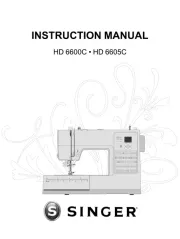
4 Juli 2025

5 Februari 2025
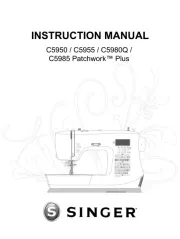
2 Februari 2025
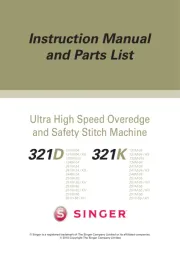
23 December 2024

23 December 2024

23 December 2024

23 December 2024

23 December 2024

23 December 2024

23 December 2024
Handleiding Naaimachine
- Mediashop
- Bestron
- Tristar
- Essentiel B
- Novamatic
- ER
- Victoria
- Tesco
- SteamMax
- Baby Lock
- Home Electric
- Privileg
- Union Special
- Elna
- Durabase
Nieuwste handleidingen voor Naaimachine
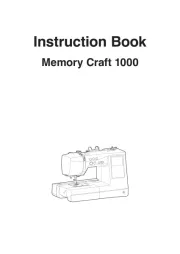
8 September 2025
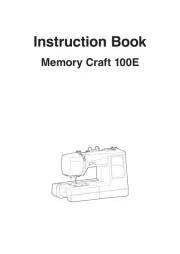
8 September 2025
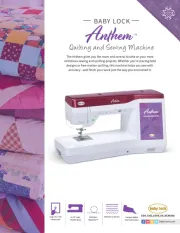
26 Augustus 2025
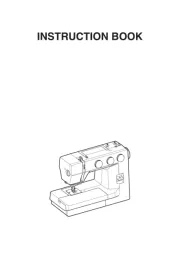
7 Juli 2025
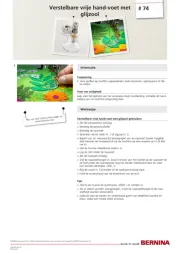
4 Juli 2025
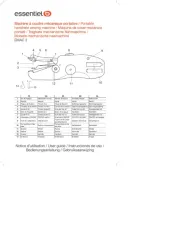
15 Juni 2025
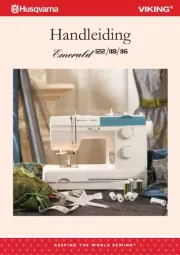
23 Mei 2025
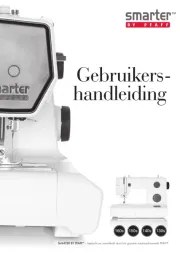
16 Mei 2025
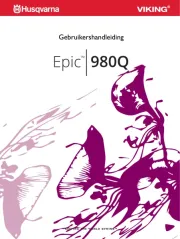
15 Mei 2025
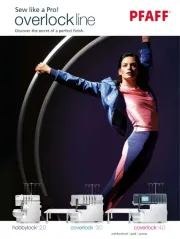
14 Mei 2025